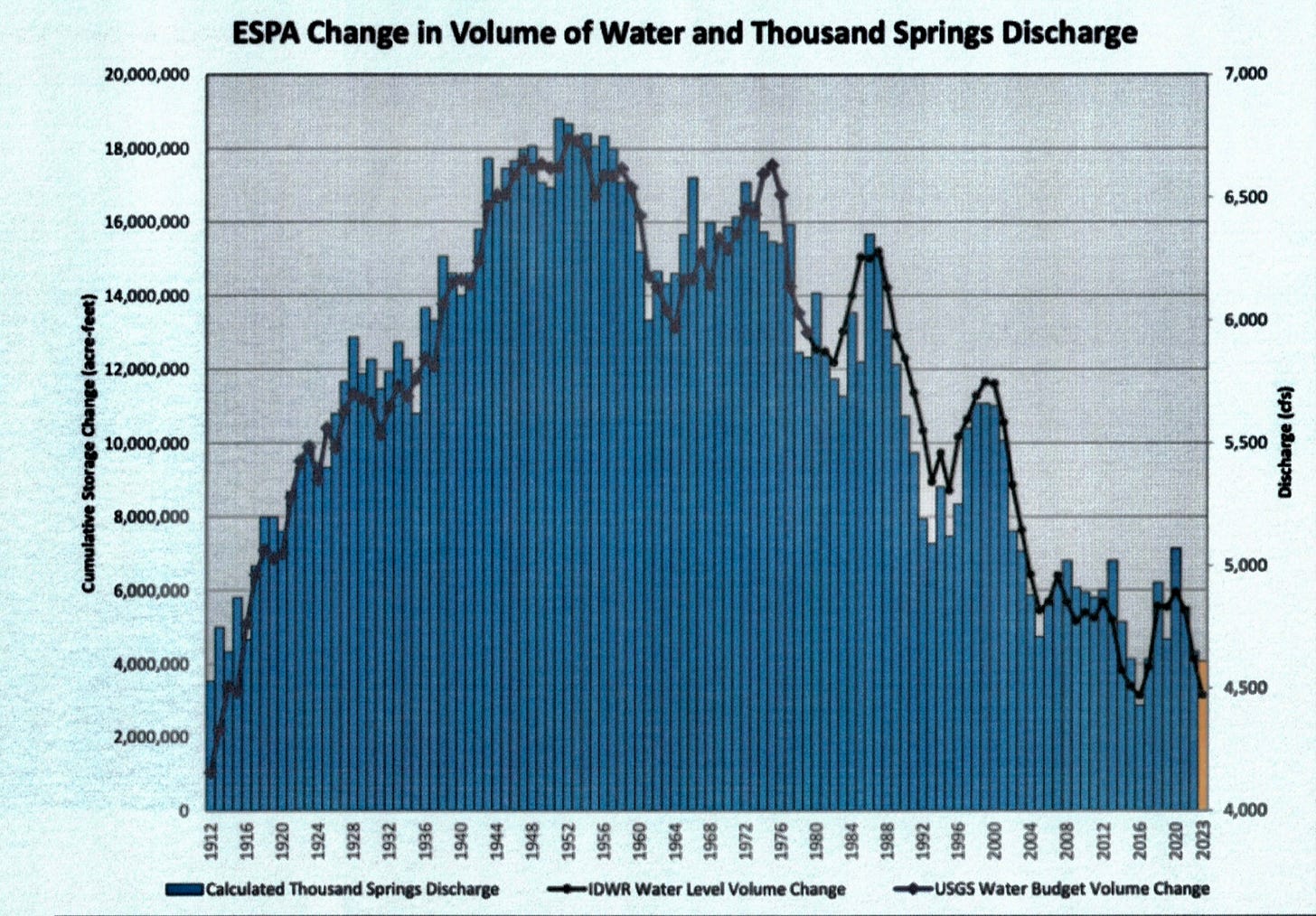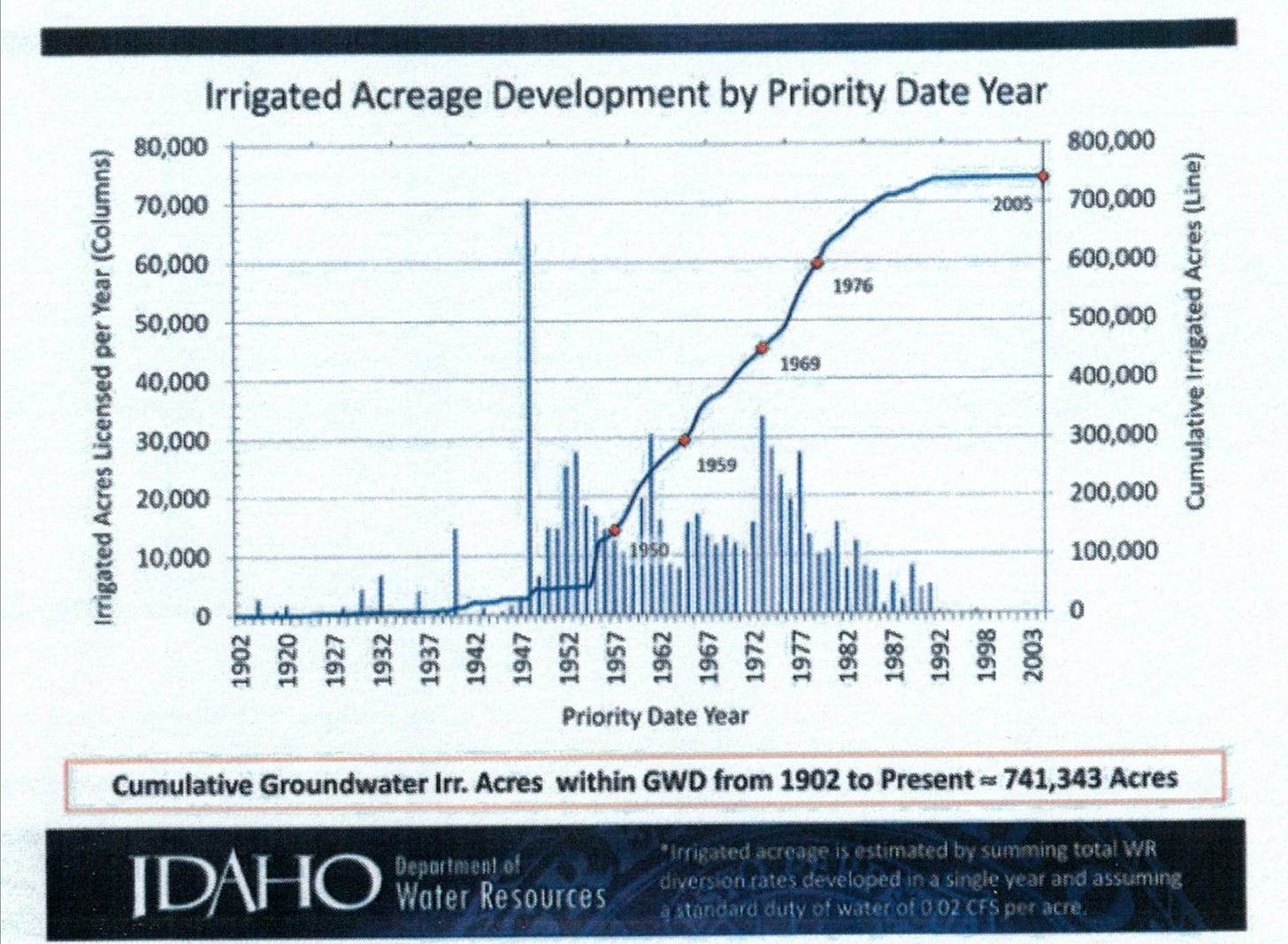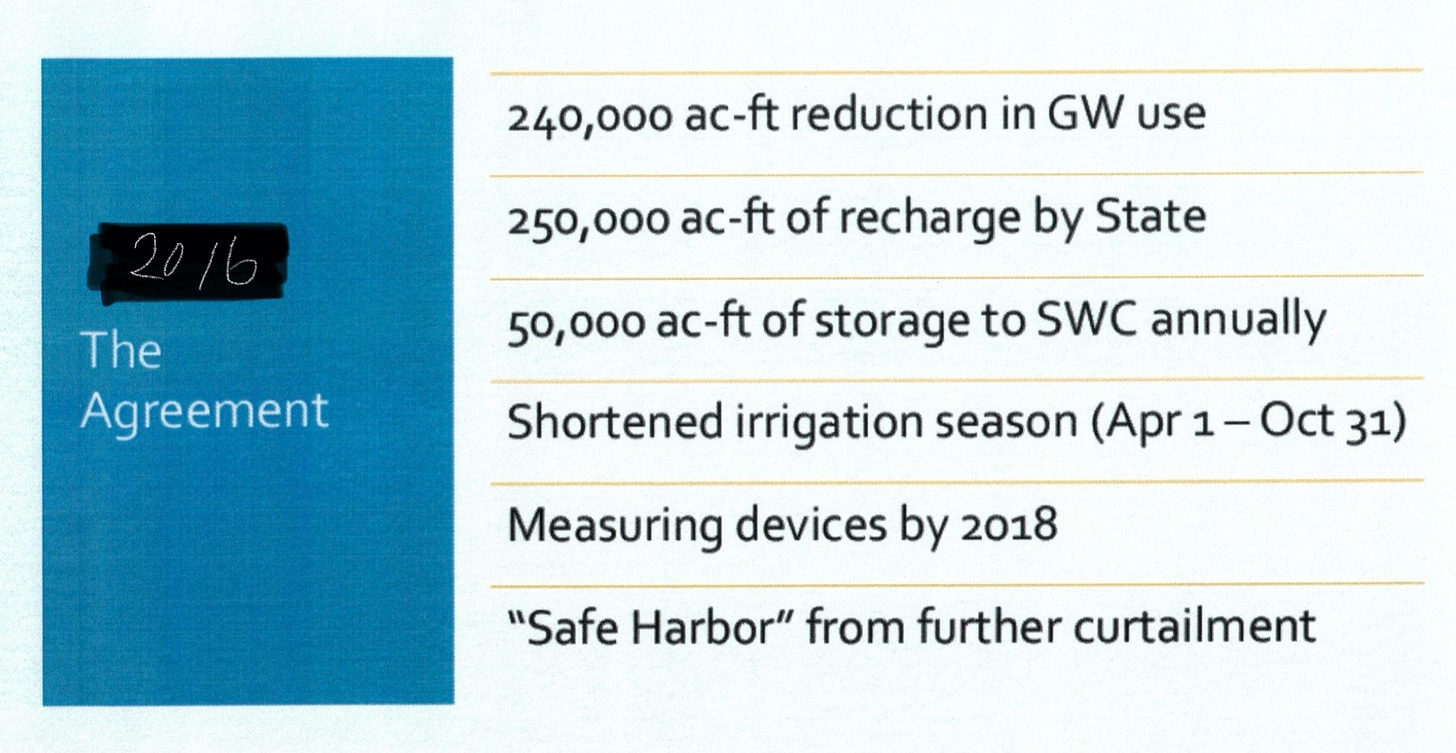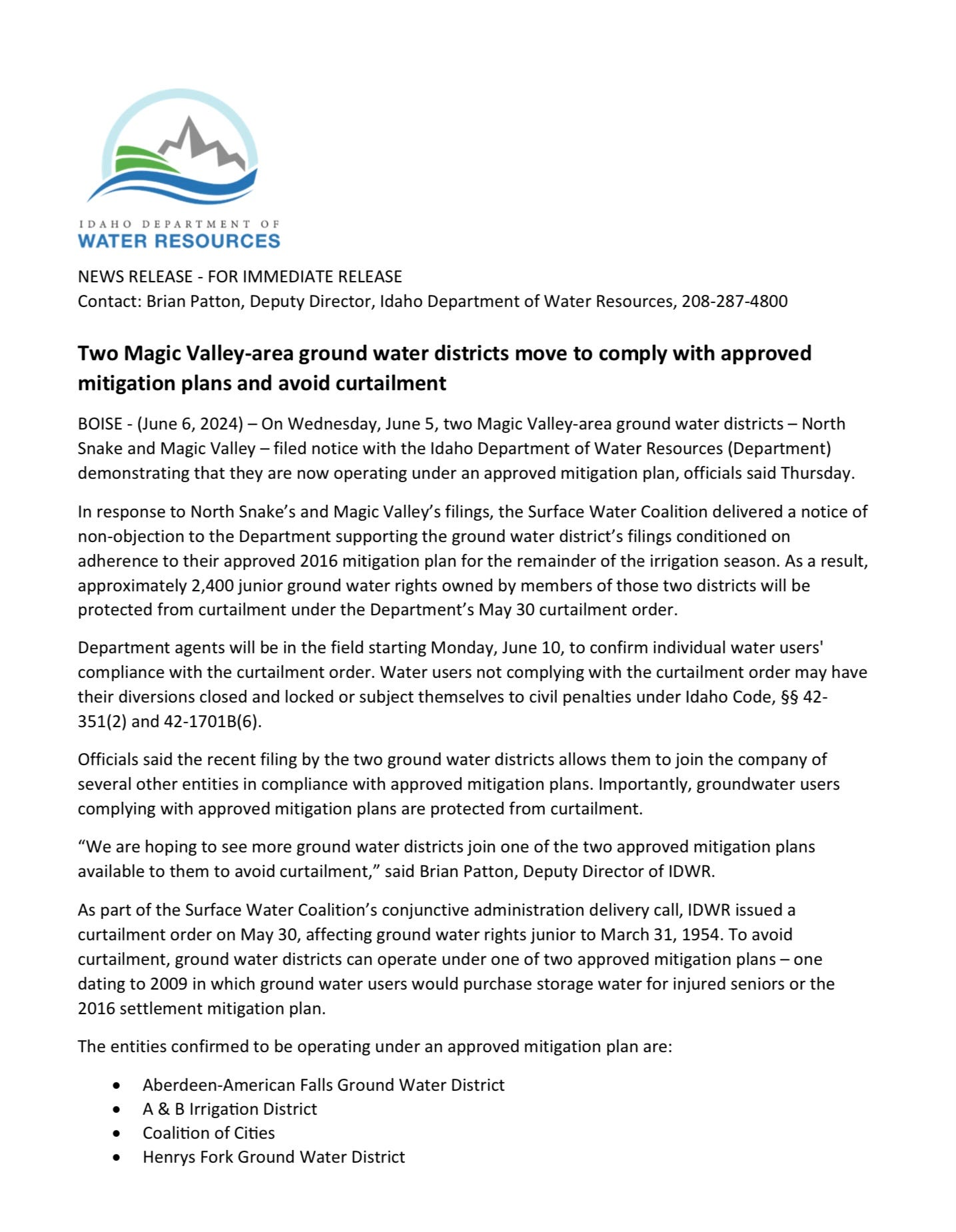There are always two sides to every story. Many of you have heard the emotional video response from Eastern Idaho that is going viral concerning water curtailments. As Paul Harvey would say, "And now.... the rest of the story."
To begin, I want to share some information on Snake River Plain Aquifer. “Idaho;s greatest and most valuable treasure is hidden from view, under the thousands of square miles of sage brush desert and irrigated farm land of the eastern Snake River Plain. It’s the Easter Snake River Plain Aquifer(ESPA). The ESPA in eastern Idaho is the largest aquifer in Idaho, and one of the largest and most productive aquifers in the world.” This body of water is the size of Lake Erie.
It is more than farming it is the very life of Southern Idaho and I can confidently say it is the life of Idaho. “It supplies drinking water to about 300,000 people and irrigation water to more than 2 million agricultural acres, which, according to the water resource board, account for 20 to 30% of Idaho’s economic output.” To read more click HERE.
For decades, Idaho cities and farms have relied on the Eastern Snake Plain Aquifer. With intermittent drought years and a growing population and industry, our aquifer is giving more than it is receiving. We must take action to help recharge it, use it more frugally, and share it responsibly.
Next let’s talk about water rights. Article 15, Section 5; “PRIORITIES AND LIMITATIONS ON USE. Whenever more than one person has settled upon, or improved land with the view of receiving water for agricultural purposes, under a sale, rental, or distribution thereof, as in the last preceding section of this article provided, as among such persons, priority in time shall give superiority of right to the use of such water in the numerical order of such settlements or improvements; but whenever the supply of such water shall not be sufficient to meet the demands of all those desiring to use the same, such priority of right shall be subject to such reasonable limitations as to the quantity of water used and times of use as the legislature, having due regard both to such priority of right and the necessities of those subsequent in time of settlement or improvement, may by law prescribe.” Simply put “FIRST IN TIME, FIRST IN RIGHT”.
The two water rights currently in conflict, as you may have heard in the news, are surface water rights and ground water rights. Surface water rights, which have the most seniority, date back to 1904 when the canal system was created (Senior Water Rights). Ground water rights began in 1947 with the drilling of the first ground water well (Junior Water Rights). More information on water rights click HERE.
Now that I have explained Idaho water rights and their seniority, let me shed some light on current events. We have been witnessing a decline in our aquifer for decades. One way to measure this is through Thousand Springs in Hagerman, Idaho. The decline in these springs has been evident for a very long time. Today, Thousand Springs is more like Fifty Springs, which should alarm all of us, not just farmers.
The following chart gives you an idea why we all should be concerned about our ESPA.
This Chart shows the number of Ground wells and the cut off in 1992.
Even though ground well permits were discontinued in 1992, our aquifer is still losing water, and recharge efforts are not as effective as we need them to be. (I will discuss recharge and potential solutions in a future email.)
In 2016 there was an agreement made. A Senate Concurrent Resolution was also drafted in support of working together to revive our ESPA for future generations to come.
Every decision we make has a cause and effect. Idaho Ground Water users knew this agreement and paid close attention to the aquifer. They should have considered all factors before planting their crops, opting for those that require less water. As junior rights holders, they are aware that they must keep in mind the senior rights holders. Because the senior rights holders are further down the line, we have to trust that they will only take what is allotted to them. When they do not, it curtails the farmers in the Magic Valley, forcing them to figure out how to finish the year. I am disheartened that this issue could not have been resolved without resorting to social media, which has caused public upset over possible curtailment of farmers if they don’t comply. We are doomed if we cannot handle these issues more constructively.
I know this to be true: no farmer wishes to see another lose crops. They all understand how vital every part of the agricultural community is to the livelihood of Idaho. I understand the emotions involved—my dad was a potato farmer, and he often said there are two things you don't mess with a farmer about: his wife and his water. Most times, it's the other way around—his water and his wife. We must not be motivated by fear but by faith that we can work this out with our neighbors.
Finally, I will leave you with the updated press release from IDW.
Now you know…the rest of the story, Good Day.











No this is a completely different issue, it has to do with water rights and our aquifer. The colbolt mine does not take from our aquifer.
This is in no way an accurate depiction of the situation. Dive into Idaho history and this river/aquifer basin history by reading "A Little Dam Problem" , a book written by a former Idaho Attorney General who fought a power company's lawyers seeking to gain control of this water and who are now doing it again by representing and using senior water users since the power company was subordinated to agriculture after the initial fight in the 1980's.